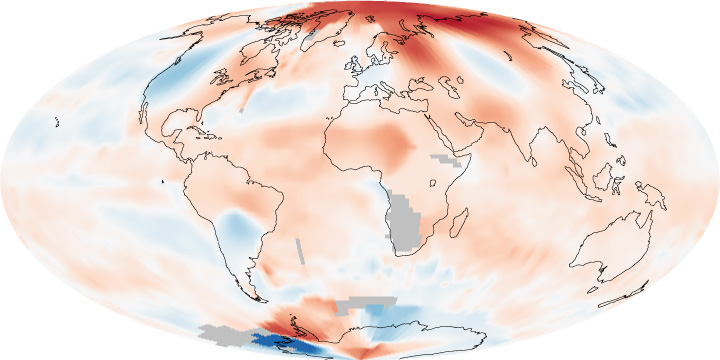Remember all those climate-change deniers going on about snow this past winter? New data from NASA might change some minds:
Especially warm temperatures—close to five degrees Celsius (9 degrees Fahrenheit) above average—occur over most of the Arctic, including the northernmost reaches of North America, northwestern Greenland, and most of the northern coast of Eurasia. Unusually warm conditions also extend southward into Eastern Europe and Siberia. In Antarctica, warm conditions appear in some inland areas and especially over the Antarctic Peninsula.
Temperature anomalies in May continued a much longer trend. GISS compared the January–May mean surface temperature anomalies for 2010 to those of 2005 and 1998 (the two warmest years on record). January–May anomalies show 2010 to be the warmest out of 131 years (2005 is the fourth warmest and 1998 is the fifth warmest). Moreover, Arctic temperature anomalies are especially pronounced, and have been since the turn of the twenty-first century.

And about that snow this winter: "Sea ice retreat and snow melt reduce Earth’s albedo, which can lead to increased warmth and further melting. Scambos explains that, although the Northern Hemisphere experienced significant snowfall in early 2010, spring melt was rapid, exposing land surfaces to sunlight sooner than usual."